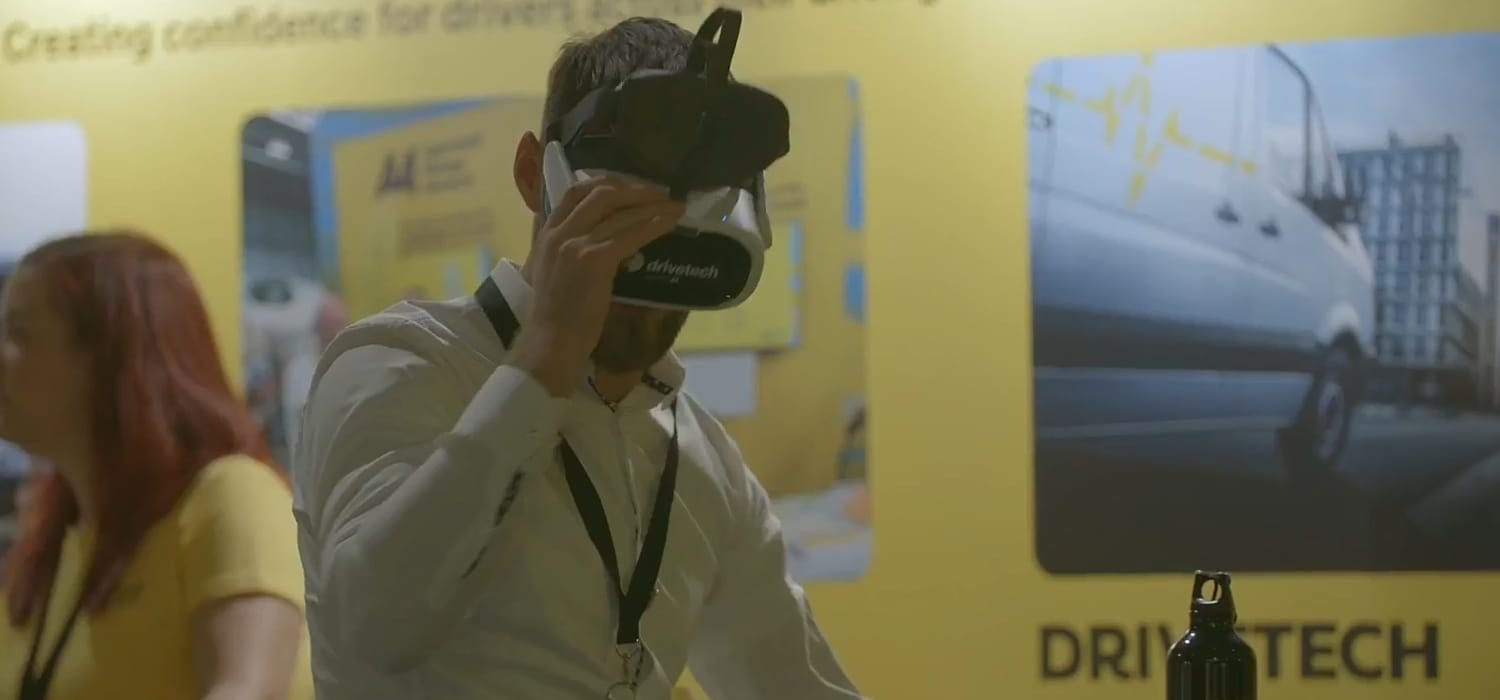
In driver training, a driver is never simply “just a driver.” They’re safety stewards, skilled navigators, and decision-makers whose actions have real-world impacts. With advances in technology, particularly Virtual Reality (VR), driver training is undergoing a transformative shift, providing new ways to improve safety, retention, and performance. Here’s why VR is rapidly becoming one of the most effective tools in driver education—and how it’s helping organisations train safer, more capable drivers.
Learning by doing: immersive, hands-on training
One of the biggest challenges in driver training is recreating the experience of real driving without the associated risks. This is where VR excels. Instead of relying on theory-based learning or basic simulation software, VR immerses trainees in lifelike environments that closely mirror actual driving conditions. Through this immersive “learning by doing,” drivers engage directly with each scenario, significantly boosting retention and understanding.
The interactive nature of VR encourages drivers to practise manoeuvres, assess potential hazards, and make decisions as they would on the road, all from the safety of the classroom. They can even tackle high-risk scenarios, such as navigating extreme weather, in a safe and repeatable environment. This adaptability makes VR ideal for both new drivers building confidence and experienced drivers looking to refine their skills.
Real-world scenarios, customised for your business needs
Not all drivers face the same challenges, and every business has unique operational requirements. This is where VR’s flexibility is revolutionary. Companies can work with VR providers like Drivetech to customise VR training to mirror their exact driving environments. Whether navigating busy urban streets, hauling heavy loads on rural roads, or operating specialist vehicles in hazardous conditions, VR allows for realistic simulations specific to each business’s requirements.
For companies, this means their drivers are not just learning general safety concepts—they’re mastering skills tailored to their day-to-day realities. The result? Better-trained drivers who are equipped to face the exact challenges they’ll encounter on the job, creating safer, more efficient operations overall.
Mistakes become learning moments, not liabilities
Traditional driver training often limits the intensity and frequency with which drivers can practise difficult skills due to safety concerns and logistical constraints. In VR, mistakes don’t carry real-world consequences. Drivers can learn to correct errors without risking damage, injury, or cost, turning every mistake into an invaluable learning opportunity.
VR also enables trainees to pause, review, and repeat scenarios as many times as needed to achieve mastery. This approach reduces the “fear of failure” and builds confidence, leaving drivers better prepared and more capable when they get behind the wheel. It’s a safe, low-stakes way for them to experience high-stakes situations.
Accelerating learning with increased retention rates
Studies show that immersive learning dramatically increases information retention. When learners actively engage in an experience—such as handling an unexpected hazard in a VR setting—they’re more likely to retain that knowledge over time compared to traditional methods. This enhanced retention is crucial for driver training, where staying sharp on complex procedures and safety protocols can mean the difference between a smooth journey and a critical incident.
VR training leaves a lasting impact because drivers aren’t simply hearing about a scenario or watching it on a screen; they’re living it. By the time they’re in the actual vehicle, they’ve already “experienced” similar situations, making them far more equipped to respond appropriately in real life
A future-proof, scalable solution
Incorporating VR into driver training makes programmes scalable and cost-effective over time. Instead of repeated one-on-one training or relying on on-road time that may be weather-dependent or costly, VR provides a consistent, repeatable experience for every driver. Companies can scale training to accommodate large fleets or frequently refresh their training without the logistical challenges of traditional methods. Whilst this doesn’t mitigate the need for on-road training in many cases, a standardised experience for users and the ability to repeat training content can be beneficial for some learners.
Moreover, as VR technology continues to advance, training programmes can evolve with it. VR systems can be updated to reflect the latest safety protocols, emerging industry trends, and even AI-driven analytics for personalised feedback, making VR an investment that will remain relevant and impactful.
Driving towards a safer future
Virtual Reality is transforming driver training, making it safer, more engaging, and more effective than ever before. At Drivetech, we’re proud to harness this innovative technology to offer customised VR training solutions that reflect the unique needs of each organisation we work with. From building confidence to instilling life-saving skills, VR is helping create a future where drivers are safer, smarter, and more prepared for the challenges ahead.
As more organisations recognise VR’s benefits, we’re likely to see widespread adoption of this technology across industries. With VR, driver training becomes not just an exercise in skill development, but a powerful experience that equips drivers to make safer decisions every time they’re behind the wheel.
Ready to experience the future of driver training? Discover how VR can transform safety and skill for your drivers, and take the first step towards a safer, smarter, and more efficient driving workforce with Drivetech.
Get in touch, and we’ll help you to get started.
Back to news and resources

